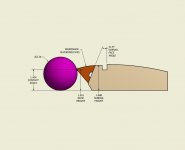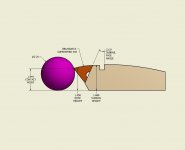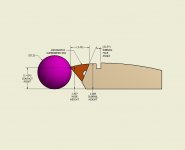MamboFats
Active member
Goodmorning all,
Regarding the dimensions of pool table cushions I found these graphics online.
The first shows a 20° angle for glueing the cushion, the other graphic of the ARtemis brand I imported in Fusion360 and it measures a ±23°.
The third graphic shows a 45° angle on the bottom side of the cushion (should translate to 15° on the inside rail)



Is there a good/better/best angle ?
Does it depend on manufacturer (Artemis is easily available for me) ?
Can anyone clarify this for me?
thx for your help
Alain
Regarding the dimensions of pool table cushions I found these graphics online.
The first shows a 20° angle for glueing the cushion, the other graphic of the ARtemis brand I imported in Fusion360 and it measures a ±23°.
The third graphic shows a 45° angle on the bottom side of the cushion (should translate to 15° on the inside rail)
Is there a good/better/best angle ?
Does it depend on manufacturer (Artemis is easily available for me) ?
Can anyone clarify this for me?
thx for your help
Alain


